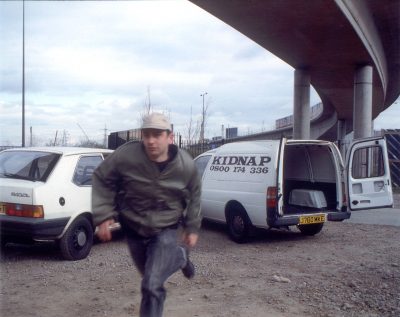In 1998, we created our first project available online: Kidnap. We had the challenge of making an experience for audiences where only two people – the winners of the lottery who would be kidnapped – would experience the work in person. Our answer was to set up a website with a live video stream from a secret location showing the winners’ 48 hours of captivity.
For viewers on dial-up modems, the video from the remotely controlled pan-tilt-zoom camera was constrained to 320 x 240 pixels with a frame rate slightly better than 1fps. Despite the rudimentary technology, we quickly realised that streaming had some interesting possibilities from having an audience at a distance: the relationship of control (or lack of) to the action on screen, the potential of being hidden from but co-present with other remote spectators, and the reach to contexts and audiences outside of traditional performance spaces.
We realised that what mattered more than the quality of the image was your relationship to the situation (and often to the person) that you’re linked to, and the potential for your role in this setting. Attention to this principle has persisted in all our subsequent streamed projects: from the jeopardy of being chased with a visceral audio stream from runners in Can You See Me Now? to being invited to remotely mentor young adults as they show you round their neighbourhood in My Neck Of The Woods, to 90 minutes of live Steadicam flowing through the city that precedes an invitation to share your innermost regrets in My One Demand.
We’re now in the midst of plotting the action for Cat Royale: how many cameras do we need? And what visualisations of the AI can we produce to reveal the heart of the relationship between the cats and a robot arm? While the technology has moved on to depth-sensing cameras with motion tracking, all piped through OBS at 1080p, the principal question of what matters when you watch remains the same.
– Nick
Get news like this straight to your inbox
By signing up to our mailing list you’ll receive monthly emails about our upcoming projects, news, competitions and more. Here’s how we use your data and how you can opt-out.
